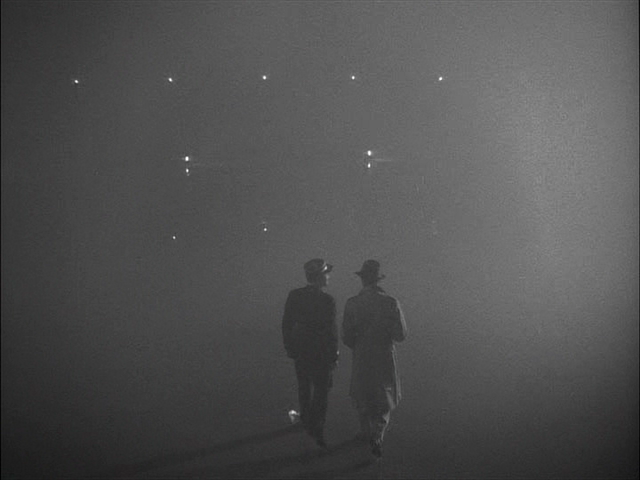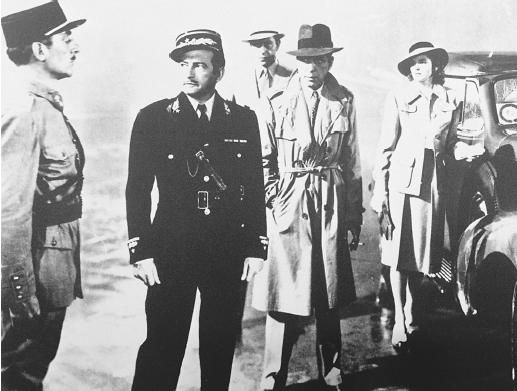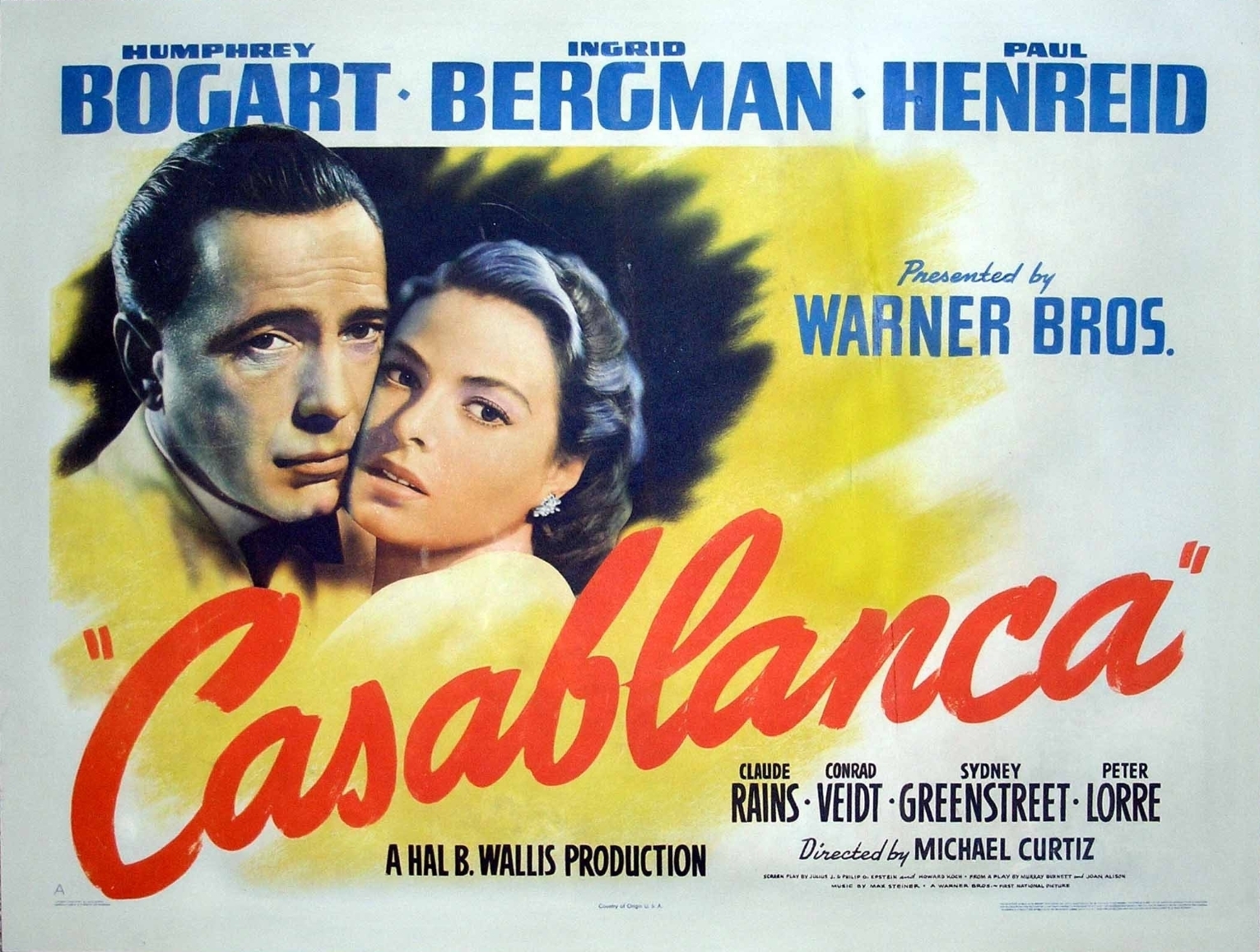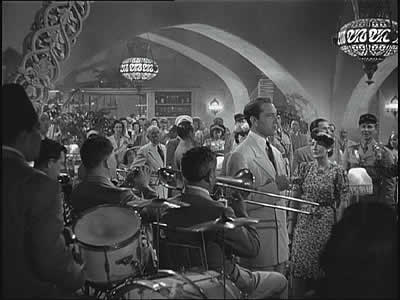
It could be said that it is hard to relate to

It could be said that it is hard to relate to




Lighting: The lightning within this film is dark, almost twilight. This is done perhaps to show that it is always darkest before the dawn and that both Rick and Renault are going to see a bright new day.
Camera Proximic: This is a crucial piece. The camera is situated in a public proximity. As Rick and Renault walk away into the fog the camera does not follow them, it is merely to show that things will get better. In time all of us can, in essence, walk through the fog and move on.


The script for Casablanca arrived at Warner Brothers’ studios the day after the December 7, 1941 Japanese attacks on Pearl Harbor in Hawaii. France had been invaded by Nazi Germany in 1940, and other parts of Europe were also under German control. Roosevelt’s government was diplomatic with the Vichy regime from the time it rose to power in 1940 to November 1942.
Casablanca’s general release was on January 23, 1943. There was general public approval of the film’s timing and political message. The Casablanca Conference was happening at the same time from January 14 to 24, which saw the planning of the Allies European Strategy.
The film was set in North Africa during the early days of World War II, and focused on European resistance to Fascism. People trying to escape Nazi persecution plan to leave Europe through Casablanca to go to America.
At the end of the film, Captain Renault (Claude Rains) the Vichy leader and Rick Blaine (Humphrey Bogart) the American club owner, watch as a plane flies off into the fog. The plane carries Victor Lazlo (Paul Henreid) a Czech resistance leader and Ilsa Lund (Ingrid Bergman) his wife and Rick’s former love. Lazlo and Lund went through Casablanca to try to escape to America. German Major Strasser (Conrad Veidt) would have stopped the couple if Renault and Blaine did not work together.
The dominant of this scene is Blaine’s face because he’s placed at the top right corner in the foreground. His eyes look out of the frame to the airplane Lazlo and Ilsa are on. He witnesses their safe escape, the product of his heroic efforts. The camera proxemics are close, there’s a tight frame and there is low density so that the audience focuses on Blaine’s facial expression and proximity to Renault.
Indeed, the background is blurred out in low lighting so that Blaine and Renault are the main focus. Their personal character proximity not only tells of their allied stance against the Vichy regime, but also gives more detail to their relationship and roles in the film.
The character proxemics are almost intimate as Blaine is closer to the camera, standing in front of Renault, overlapping his figure. This tells the audience that even though Renault and Blaine worked together, the American, is the main hero of the story. He sacrificed his personal happiness to preserve American liberty and ensure it spreads throughout Europe.
The film tries to convince the audience to drop the country’s general isolationist attitude and embrace a more active role in World War II.


The political message of Casablanca is revealed through the quintessential love story of Rick and Isla. The political scenes standing alone would have made a boring film. The movie needed the love story to make the political statements of the filmmakers.
Many of the political scenes revolve around Rick working out agreements with the military, or Victor secretly meeting with some of his allies. Victor’s freedom depends on the outcome of the conflict between Isla and Rick. Because Rick still loves Isla, and does not want to let her go, Victor could have potentially been caught by the military and sent back to a concentration camp. However, Rick finally learns the truth about his romance with Isla in Paris; that she found out her husband had not really died and she had to return to him, leaving Rick. This causes Rick to be the heroic one, finally giving up Isla and moving on with his life. Most people who think of the film Casablanca, believe it to be a love story, when in fact it really is a political statement about World War II. Overall, this movie did an excellent job of both entertaining the audience and focusing on the ideology of the war.
Mise En Scene: In this scene, Rick and Isla are in Paris, a flashback to their romance, looking down at the street where German troops are invading.
Dominant: The dominant in this scene is Isla. Rick has his hand placed on her shoulder, leading the audience's eye to her. Her clothes are also brighter than Rick's, and his face has several shadows cast upon it, while hers appears completely white and flawless.
Frame: The framing of this scene is tight, focusing in Rick and Isla. This draws the audience's attention to both of them, focusing on where they are looking.
Character Proxemics: The two characters are very close to each other. Neither of them are looking at each other, however, they are obviously close emotionally, as Rick as his hand on Isla. Both looked concerned about what is going to happen, so they have drawn closer to each other.
Camera Proxemics: The camera proxemics in this scene is focused on half of their bodies. The audience can see their facial expressions as well as their body movements.
Lighting: The lighting in this scene is focused on Isla and Rick. The two of them stand out over the background, which is slightly darker.
This scene in Casablanca shows how much Rick and Isla loved each other, and also how Rick was heroic, working out the best possible solution for everyone.
 The political expediency theory allows films not to alienate an audience. Casablanca is a film that allows all people to witness a love story among political turmoil. The three main characters are Rick, Ilsa, and Victor. The setting is Casablanca, which is located in Northern Africa under Nazi rule. These three are trapped in a love triangle. The audience can see the love story unfold and more dangers present themselves as the story develops. Some people of the people of Casablanca want to move America to escape the political turmoil. In my scene, you get a balance of the love story and a balance of the political turmoil. In this scene you get to see the pride of the French in Casablanca out roar German Soldiers. The scene starts off with Victor and Rick standing on the balcony watching the Germans sing their national anthem in Rick's Bar. Victor rushes down the stairs and go directly to the band in the bar and demands them to start playing the French national anthem. As the band starts to play, people in the bar start to arise and singing their hearts out. The camera does several close-ups while they sing the national anthem. It closes up on Rick when he gives the band the okay to play the anthem. You can see the seriousness in his face when he gives the answer. It closes up on Ilsa when she glares at Victor with love struck eyes, as he directs the band and sings the anthem along with the others.
The political expediency theory allows films not to alienate an audience. Casablanca is a film that allows all people to witness a love story among political turmoil. The three main characters are Rick, Ilsa, and Victor. The setting is Casablanca, which is located in Northern Africa under Nazi rule. These three are trapped in a love triangle. The audience can see the love story unfold and more dangers present themselves as the story develops. Some people of the people of Casablanca want to move America to escape the political turmoil. In my scene, you get a balance of the love story and a balance of the political turmoil. In this scene you get to see the pride of the French in Casablanca out roar German Soldiers. The scene starts off with Victor and Rick standing on the balcony watching the Germans sing their national anthem in Rick's Bar. Victor rushes down the stairs and go directly to the band in the bar and demands them to start playing the French national anthem. As the band starts to play, people in the bar start to arise and singing their hearts out. The camera does several close-ups while they sing the national anthem. It closes up on Rick when he gives the band the okay to play the anthem. You can see the seriousness in his face when he gives the answer. It closes up on Ilsa when she glares at Victor with love struck eyes, as he directs the band and sings the anthem along with the others.


 The Political Expediency Theory is when the film tries to create a balance not to alienate the audience. They try to hide their message under a neutral veil. This is what Casablanca does. Casablanca's screenplay arrived at Warner Brothers on December 8, 1941 (one day after Pearl Harbor). Soon after America was involved in WWII. Rick (Humphrey Bogart) portrays a kind of American reasoning before the war. He "won't stick his neck out for nobody." Before committing to the war effort, America had an isolationist stand. We had broken out of it for WWI, but returned to it after. We find out that Rick did fight against the Fascists in Spain, but after secluded himself. As the film progresses, Rick softens and puts himself behind the war effort. He allows Laszlo to start singing La Marseillaises (the French Anthem) when the Germans are singing their song about the Reich. Risky move considering he is in Vichy France. He puts his neck on the line for the cause by helping Laszlo ( Paul Heinreid), a Free French activist, and Isla ( Ingrid Bergman), his love, escape from Casablanca. In the scene where Laszlo and the clients at Rick's sing their moving rendition of La Marseillaises (1:12: 40- 1:13:50) , the audience can get a feel of how important their heritage and way of life before the Nazi invasion is to them. This scene is very dramatic and emotional. According to Roger Ebert, most of the extras in the film where European refugees from the war, and the emotion that they showed while singing was real. They knew that they had to keep the memory and faith alive. It may just come across to some as just an opportunity to belittle the German oppressors, but to others it is a moving show of patriotism and the fight for what is right and cherished: a life where man can be himself and in charge of his own destiny, not a life where he is oppressed by a evil totalitarian regime. When watching this scene, you realize that your "problems don't amount to a hill of beans", and that you need to unslefishly put yourself behind the effort. You are not just fighting for yourself, but for all of those who have lost so much already and still keep the flame of hope lit in their hearts.
The Political Expediency Theory is when the film tries to create a balance not to alienate the audience. They try to hide their message under a neutral veil. This is what Casablanca does. Casablanca's screenplay arrived at Warner Brothers on December 8, 1941 (one day after Pearl Harbor). Soon after America was involved in WWII. Rick (Humphrey Bogart) portrays a kind of American reasoning before the war. He "won't stick his neck out for nobody." Before committing to the war effort, America had an isolationist stand. We had broken out of it for WWI, but returned to it after. We find out that Rick did fight against the Fascists in Spain, but after secluded himself. As the film progresses, Rick softens and puts himself behind the war effort. He allows Laszlo to start singing La Marseillaises (the French Anthem) when the Germans are singing their song about the Reich. Risky move considering he is in Vichy France. He puts his neck on the line for the cause by helping Laszlo ( Paul Heinreid), a Free French activist, and Isla ( Ingrid Bergman), his love, escape from Casablanca. In the scene where Laszlo and the clients at Rick's sing their moving rendition of La Marseillaises (1:12: 40- 1:13:50) , the audience can get a feel of how important their heritage and way of life before the Nazi invasion is to them. This scene is very dramatic and emotional. According to Roger Ebert, most of the extras in the film where European refugees from the war, and the emotion that they showed while singing was real. They knew that they had to keep the memory and faith alive. It may just come across to some as just an opportunity to belittle the German oppressors, but to others it is a moving show of patriotism and the fight for what is right and cherished: a life where man can be himself and in charge of his own destiny, not a life where he is oppressed by a evil totalitarian regime. When watching this scene, you realize that your "problems don't amount to a hill of beans", and that you need to unslefishly put yourself behind the effort. You are not just fighting for yourself, but for all of those who have lost so much already and still keep the flame of hope lit in their hearts.

The political expediency theory in Casablanca influences the audience’s feelings toward America’s involvement in World War II. The audience becomes sympathetic toward Rick and he is the focus of the film, character wise. He represents America and its transition through World War II. In the beginning of the film, he is indifferent to the events going on around him and he is focused on running his business. But when Ilsa enters the picture, his idea on the issues going on changes and by the end of the movie he does what’s best for everyone. This illustrates how America’s entrance into World War II was a necessity and how in the end it was the noblest thing to do. This change is a commentary on how America was determined not to enter the war, but realized if they did not it would hurt more people in the end. Ilsa was the motivation for Rick to do the right thing, just as Pearl Harbor was the last straw before the U.S. entered the war. The events surrounding Ilsa and Victor showed Rick that he needed to act in a selfless way in order to help the bigger picture. This film is used to justify America fighting in World War II. It showed the viewers that sometimes fighting is okay if one is fighting for what is right. Casablanca allows the audience to feel comfortable with such a huge event in history. It creates confidence in America and shows that with the support of its citizens, things will turn out okay. The political expediency theory gives Casablanca the underlying political message needed for that time in American history.








 The social network could be said to be a movie made in order to make friends. This film presented a social image of "cool" through the fall step performances of "cool actors" depicting real life makers of social normative, and how it was made into marketing magic. The film was based on the real lives of Mark Zuckerberg and founding partner Eduardo Saverin. On paper this story would hold little to no interest to those not fully interested in long drawn out legal battles over copyright infringement and intellectual property rights, or maybe those interested in algorithmic math uses in fluctuating proxy servers to initiate a static IP. But on film everyone is interested in how to make friends and how to be cool. By presenting Mark as a completely flippant icon of brain power in constant combat with those insinuated to be his social better through character revelation, the audience was able to connect with this real life billionaire. Even though Mark is constantly presented as a complete ass hole throughout the entire movie, who even turns on his only friend in lay of a more socially cool Sean Parker, he is none-the-less the hero of this film. This transformation of character is accomplished in a few ways. While the court battles were boring in real life, to be sure, they were flashed back and forth to throughout the film in a light and playful way to provide plot elements and display the absolute brilliance, disregard of authority, and remorse at atrocities the character of Mark finds himself in. The character is almost always dressed in a very lackadaisical fashion to indicate his moral superiority to those that are judging him and of corse to be "cool." Mark also breaks up with his girlfriend at the beginning of the film in an exceptionally horrible way by broadcasting her vile traits to the net at large, which throughout the film he shows remorse for. By the end of the film you are left with a person who as an audience member you just want to be your very cool friend.
The social network could be said to be a movie made in order to make friends. This film presented a social image of "cool" through the fall step performances of "cool actors" depicting real life makers of social normative, and how it was made into marketing magic. The film was based on the real lives of Mark Zuckerberg and founding partner Eduardo Saverin. On paper this story would hold little to no interest to those not fully interested in long drawn out legal battles over copyright infringement and intellectual property rights, or maybe those interested in algorithmic math uses in fluctuating proxy servers to initiate a static IP. But on film everyone is interested in how to make friends and how to be cool. By presenting Mark as a completely flippant icon of brain power in constant combat with those insinuated to be his social better through character revelation, the audience was able to connect with this real life billionaire. Even though Mark is constantly presented as a complete ass hole throughout the entire movie, who even turns on his only friend in lay of a more socially cool Sean Parker, he is none-the-less the hero of this film. This transformation of character is accomplished in a few ways. While the court battles were boring in real life, to be sure, they were flashed back and forth to throughout the film in a light and playful way to provide plot elements and display the absolute brilliance, disregard of authority, and remorse at atrocities the character of Mark finds himself in. The character is almost always dressed in a very lackadaisical fashion to indicate his moral superiority to those that are judging him and of corse to be "cool." Mark also breaks up with his girlfriend at the beginning of the film in an exceptionally horrible way by broadcasting her vile traits to the net at large, which throughout the film he shows remorse for. By the end of the film you are left with a person who as an audience member you just want to be your very cool friend.